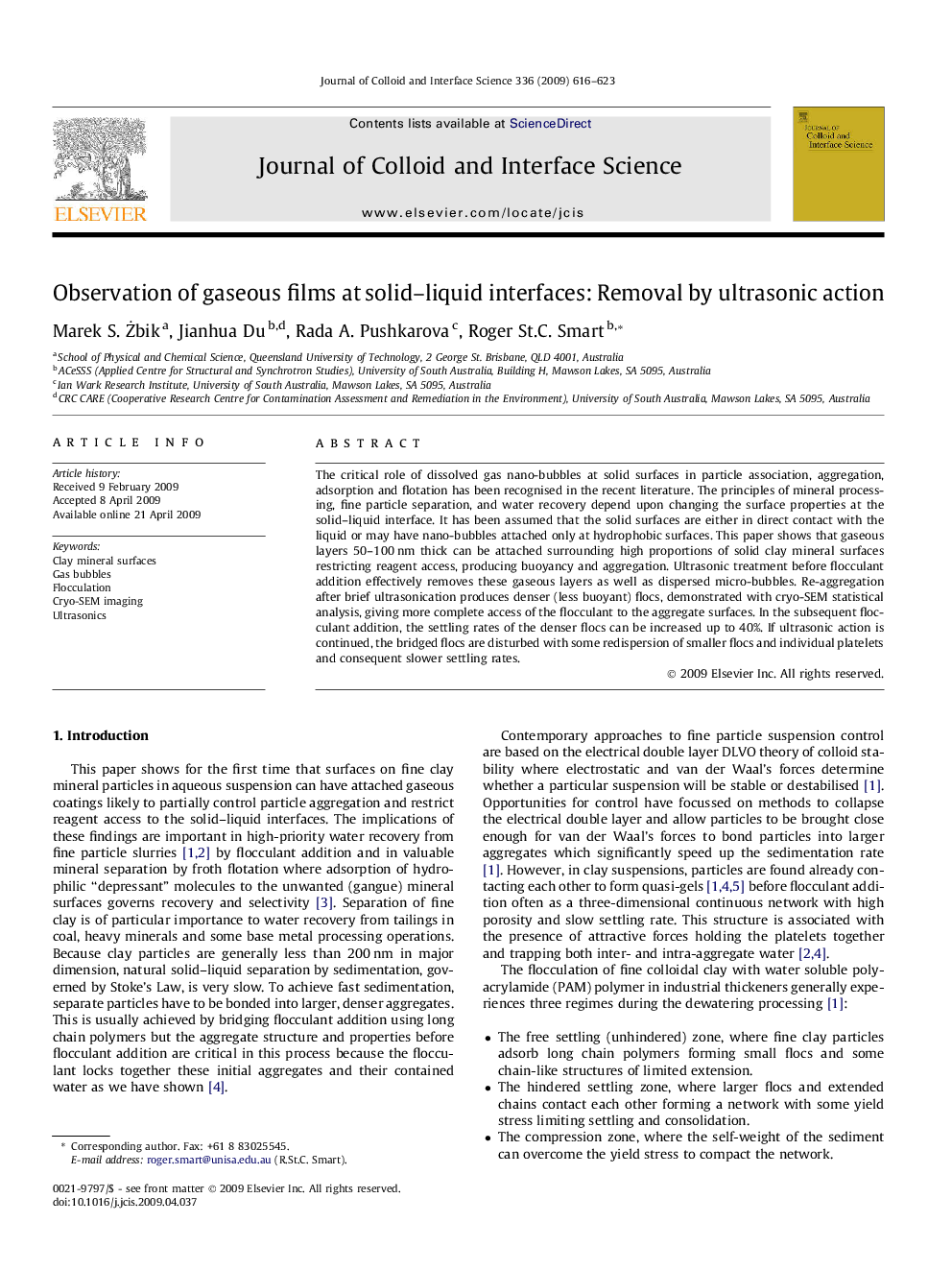| Article ID | Journal | Published Year | Pages | File Type |
|---|---|---|---|---|
| 610170 | Journal of Colloid and Interface Science | 2009 | 8 Pages |
The critical role of dissolved gas nano-bubbles at solid surfaces in particle association, aggregation, adsorption and flotation has been recognised in the recent literature. The principles of mineral processing, fine particle separation, and water recovery depend upon changing the surface properties at the solid–liquid interface. It has been assumed that the solid surfaces are either in direct contact with the liquid or may have nano-bubbles attached only at hydrophobic surfaces. This paper shows that gaseous layers 50–100 nm thick can be attached surrounding high proportions of solid clay mineral surfaces restricting reagent access, producing buoyancy and aggregation. Ultrasonic treatment before flocculant addition effectively removes these gaseous layers as well as dispersed micro-bubbles. Re-aggregation after brief ultrasonication produces denser (less buoyant) flocs, demonstrated with cryo-SEM statistical analysis, giving more complete access of the flocculant to the aggregate surfaces. In the subsequent flocculant addition, the settling rates of the denser flocs can be increased up to 40%. If ultrasonic action is continued, the bridged flocs are disturbed with some redispersion of smaller flocs and individual platelets and consequent slower settling rates.
Graphical abstractCryo-SEM of kaolinite aggregates suspended in vitrified 0.01 M NaCl solution with surface-attached gas bubbles (voids in solution) at A, intra-aggregate voids at B and voids in the solution at C.Figure optionsDownload full-size imageDownload as PowerPoint slide
